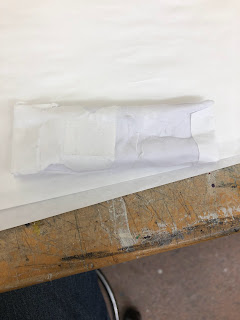Touch Response
#1:
Title: Mother rat mustn’t leave her children
Medium: Colored pencils
Dimension: Two dimensional
Quote:
"Schanberg first began his rat experiment as a result of his work in pediatrics; he was especially interested in psychological dwarfism. Some children who live in emotionally destructive homes just stop growing. Schanberg found that even growth-hormone injections couldn't prompt the stunted bodies of such children to grow again, but tender loving care did. The affection they received from the nurses when they were admitted to a hospital was often enough to get them back on the right track. What's amazing is that the process is reversible at all. When Schanberg's experiments with infant rats produced identical results, he began to think about human preemies, who are typically isolated and spend much of their early life without human contact. Animals depend on being close to their mothers for basic survival. If the mother's touch is removed (for as little as forty-five minutes in rats), the infant lowers its need for food to keep itself alive until the mother returns." (Ackerman, A Natural History of the Senses, p.47)
Artist Statement:
This artwork I made was inspired by the real animal nature of a female rat taking care of its babies. It shows how much the female rat needs to be close to its babies to show them love and affection. Baby rats usually do not feel that they want to be away from mother, which makes it hard to separate them from each other. If the mother were to be separated from her babies, then who would take of them and how would the babies survive in nature without their mother’s touch. It reminds me of how close of a relationship I had with my mother when I was a toddler, and I had to stay close to her so that I would not feel alone. Love and affection are the two things that can show a symbol of touch.
#2:
Title: The vision of circus attractions
Medium: Colored pastels and pencils
Dimension: Two dimensional
Quote:
"As I rearrange the preemie in his glass home, I notice that on the walls a bright circus design shows clowns, a merry-go-round, tents, balloons, and a repeat banner that says "Wheel of Fortune." "Touch is far more essential than our other senses,"" (Ackerman, A Natural History of the Senses,p. 48)Artist Statement:
I was inspired to create a drawing of a circus tent with a carousel and balloons in the background because of the vision that one of the people the author interacted with had seen from a glass window. I pictured the artwork as if the circus was standing right in front of my own house since the circus tent covers up most of the drawing while it touches the bottom-right corner of the carousel on the left and the tips of one of the balloons along with the “Wheel of Fortune” banner on the right. The tent almost feels like I can easily pick up and hold it in my hands, even for the carousel and the balloons. Another way of looking at it is by imagining that I am walking towards the tent then going in to see what the wheel of fortune that the circus may be promoting may look like. It is like I have a whole attraction to myself.





Comments
Post a Comment